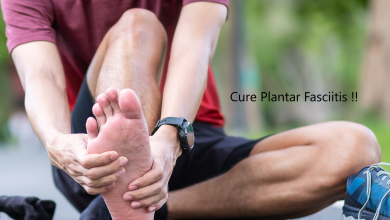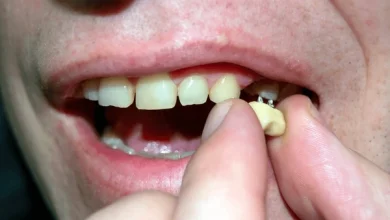How Does A Broken Bone Heal?

A broken bone, commonly termed as a fracture, is a type of injury that can go from minor to severe, leaving an impact on the individuals of all age groups.
While the initial injury may cause pain and discomfort, the human body possesses remarkable regenerative capabilities that facilitate the healing process.
The Road to Recovery: Understanding How Broken Bones Heal
In this blog post, we will explore the intricate journey of bone healing, from the moment of fracture to the restoration of strength and function.
- The Fracture:
The journey of bone healing begins with the occurrence of a fracture, which can result from various causes, including trauma, falls, or repetitive stress.
Fractures are classified based on their severity, location, and the extent of displacement.
Few commonly known fractures include simple or closed fractures, where the bone is broken cleanly without leaving a pierce on the skin, and compound or open fractures, where the broken bone is protruded through the skin, raising the risk factor of getting infections.
- Immediate Response:
Upon fracture, the body initiates an immediate response to protect the injured area and initiate the healing process.
Blood vessels at the site of the fracture constrict to minimize bleeding, while nearby tissues release inflammatory mediators, triggering an inflammatory response.
This inflammatory phase is essential for removing debris and initiating the formation of a blood clot, which serves as a temporary scaffold for bone regeneration.
- Formation of Callus:
As the inflammatory response subsides, specialized cells called chondrocytes and osteoblasts migrate to the site of the fracture, initiating the formation of a soft callus.
Chondrocytes produce a cartilaginous matrix, while osteoblasts deposit new bone tissue, gradually bridging the gap between the fractured ends.
This stage of bone healing is characterized by the proliferation of cells and the synthesis of collagen, providing structural support to the developing callus.
- Remodeling Phase:
Over time, the soft callus is replaced by a hard callus composed of woven bone, marking the transition to the remodeling phase of bone healing.
Osteoclasts, specialized cells responsible for bone resorption, begin to remove excess bone tissue, while osteoblasts deposit new bone in a process known as remodeling.
This phase is crucial for restoring the strength and integrity of the bone, as the newly formed bone tissue undergoes restructuring to resemble the original bone architecture.
- Factors Affecting Healing:
The process of bone healing can be affected by numerous factors, that includes how severe the fracture is, the age factor of the individual and overall health, and the presence of underlying medical disorders such as osteoporosis or diabetes.
Adequate nutrition, including sufficient intake of calcium, vitamin D, and protein, is essential for supporting bone healing.
Additionally, factors such as smoking, excess consumption of alcohol, and certain medicines can impair the body’s capability to recover itself and defer the healing process.
- Treatment Modalities:
The treatment approach followed by the best orthopedic doctor in India for a broken bone depends on various factors, including the type and location of the fracture, as well as the individual’s overall health and lifestyle.
In a few cases, conservative and traditional measures such as immobilization with a cast or splint may be felt adequate to promote healing, while more complex fractures may be necessitated with surgical treatments.
Surgical options may include internal fixation with plates, screws, or rods, or external fixation with pins or wires, aimed at stabilizing the fracture and facilitating optimal alignment for healing.
- Rehabilitation and Recovery:
Following the initial treatment, rehabilitation plays a crucial role in restoring mobility, strength, and function to the affected limb.
Physiotherapy exercises are designed as per the individual’s specific requirements and may include a range of motion exercises, strength training sessions, and functional activities that are needed to improve coordination and one’s balance as well.
Gradual progression of activities helps prevent complications such as stiffness, muscle weakness, and joint instability, allowing for a successful return to daily activities and sports.
Conclusion:
The process of bone healing is a complex and dynamic journey that involves a series of coordinated cellular and molecular events.
From the initial inflammatory response to the formation of a new bone tissue, the body’s innate regenerative capacity plays a pivotal role in restoring the structural integrity of the fractured bone.
While factors such as how severe the fracture is and health status of an individual can exert their influence on the healing process, advanced techniques in medical science and rehabilitation methods continue to promote outcomes for individuals that are getting recovered from broken bones.
Understanding and analyzing the mechanisms underlying bone healing not only throws light on the body’s remarkable capability to heal itself but also underscores the significance of early but appropriate treatment, and comprehensive rehabilitation in facilitating optimal recovery.
As we continue to unravel the complexities of bone healing, we gain valuable insights that pave the way for innovative approaches to fracture management and ultimately improve the quality of life for individuals affected by this common injury.
For more information related to orthopedic rehabilitation programs, please visit the best joint replacement specialist in Delhi NCR.





